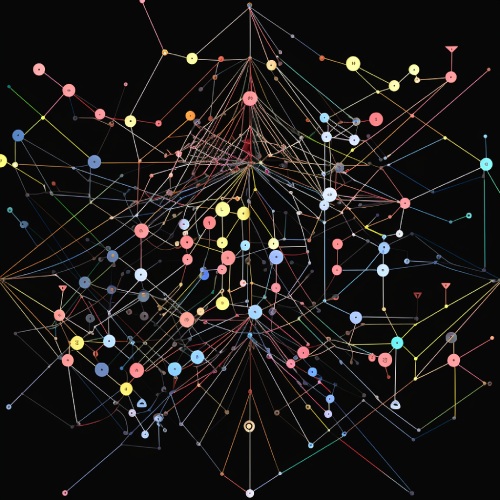
The complexities of patenting algorithms present a challenge many face today in our increasingly technology-driven world. With the unprecedented rise of artificial intelligence and machine learning in recent years, algorithms have ascended to the status of precious assets for tech companies and inventors. Exploring the current legal landscape, weighing the pros and cons, and learning the best practices for patenting algorithms are important to understanding this intriguing intersection of technology, law, and intellectual property.
What Is an Algorithm?
Algorithms have become an integral part of our daily lives, even if we might not always realize it. At their core, algorithms are specific sets of instructions or rules that solve a problem or accomplish a task. They’re the backbone of the digital world, dictating everything from your Google search results and your Facebook news feed to complex weather forecasts and financial market predictions. In the world of computer science, algorithms are akin to the recipe that instructs a computer on how to perform a specific function or solve a particular problem.
However, not all algorithms are created equal. Some are relatively simple and straightforward, while others are incredibly complex, involving advanced mathematical concepts and processes. For instance, the algorithms that power artificial intelligence and machine learning systems are often extraordinarily intricate, enabling these systems to “learn” from data and improve their performance over time. Algorithms can also be proprietary, kept as a trade secret by companies or individuals, or they can be open source, shared freely for anyone to use or modify.
Patenting Algorithms: The Current Legal Landscape
In the realm of patent law, innovations that can be patented typically involve a new and useful process, machine, manufacture, or composition of matter. In essence, a patentable invention must possess novelty, utility, and non-obviousness. This might include tangible products like a new type of engine or machinery, novel methods such as a unique manufacturing process, or innovative compositions like a new pharmaceutical drug. Importantly, the innovation must also have a specific, practical utility.
In the context of software and algorithms, the line becomes less clear. Algorithms are essentially mathematical methods, and these, as well as abstract ideas, are generally not considered patentable subject matter. However, if an algorithm is used in a specific and novel way that results in a technical effect, it might be patentable. For instance, Google’s original PageRank algorithm, which revolutionized online search, was granted a patent because it was a specific method that produced a new and useful result.
The current legal landscape for patenting algorithms is complex and somewhat uncertain, particularly in the United States. This uncertainty primarily arises from the landmark Supreme Court case, Alice Corp. vs. CLS Bank International, which ruled that abstract ideas implemented using a computer were not eligible for a patent unless the patent adds something extra that embodies an innovative concept. This has made it significantly more challenging to patent software and algorithms, as many have been viewed as mere abstract ideas.
However, it’s not an insurmountable barrier. Many companies successfully patent software and algorithms by demonstrating their invention provides a concrete and tangible result. Essentially, to stand a chance of being patented, an algorithm must contribute to the solution of a technical problem. However, there’s considerable subjectivity in this, and patent applications for algorithms are often dependent on the interpretation of patent examiners and courts. International laws and regulations can vary widely, adding an additional layer of complexity to the issue.
Pros and Cons of Patenting an Algorithm

Patenting an algorithm can have several benefits, especially for businesses and individuals looking to safeguard their intellectual property. First, a patent grants its owner exclusive rights to use, manufacture, and sell the patented invention for a specific period, usually 20 years, preventing others from commercially exploiting it. This can provide a significant competitive advantage and potential revenue through licensing or sales. Furthermore, patents can add substantial value to a business, often attracting investors and increasing the company’s worth.
However, there are also notable challenges and downsides to patenting an algorithm. The patenting process itself can be lengthy, expensive, and complex, with no guarantee of success. Additionally, the disclosure requirements for obtaining a patent mean that the inventor has to provide a full public disclosure of the invention, which can be risky if the patent is not granted. Moreover, given the rapid pace of technological change, the lifespan of a patent may outlast the commercial viability of the technology it protects. There is also the consideration that patenting could discourage open collaboration and innovation, as some argue that algorithms, as mathematical methods, should remain freely available for anyone to use or improve.
Best Practices for Patenting an Algorithm
If you’re considering patenting an algorithm, a crucial first step is to ensure that your invention falls under the criteria for patentability. As algorithms are generally viewed as mathematical methods or abstract ideas, it’s important to focus on the practical application of the algorithm. Highlight how it’s used in a specific, novel way to solve a technical problem, rather than the algorithm itself. Be sure to present the algorithm as part of a larger system or process, clearly demonstrating its functionality, novelty, and non-obviousness.
Next, meticulous documentation is essential throughout the development process. Keep a comprehensive record of your invention, including its conception, development, and refinement stages. These documents can be vital in proving the originality of your invention and resolving potential disputes.
Bold Patents Can Help With Your Innovative Algorithms
Patenting an algorithm is undoubtedly a complex and nuanced endeavor. While there are clear benefits to securing a patent, such as protecting and potentially monetizing your invention, it’s equally important to acknowledge the challenges, including legal hurdles, costs, and potential drawbacks to innovation. In deciding whether to embark on this path, thorough research, a firm grasp of the current legal landscape, and professional guidance are indispensable. Contact an AI patent attorney at Bold Patents who can help guide you through the process of getting your algorithm patented.